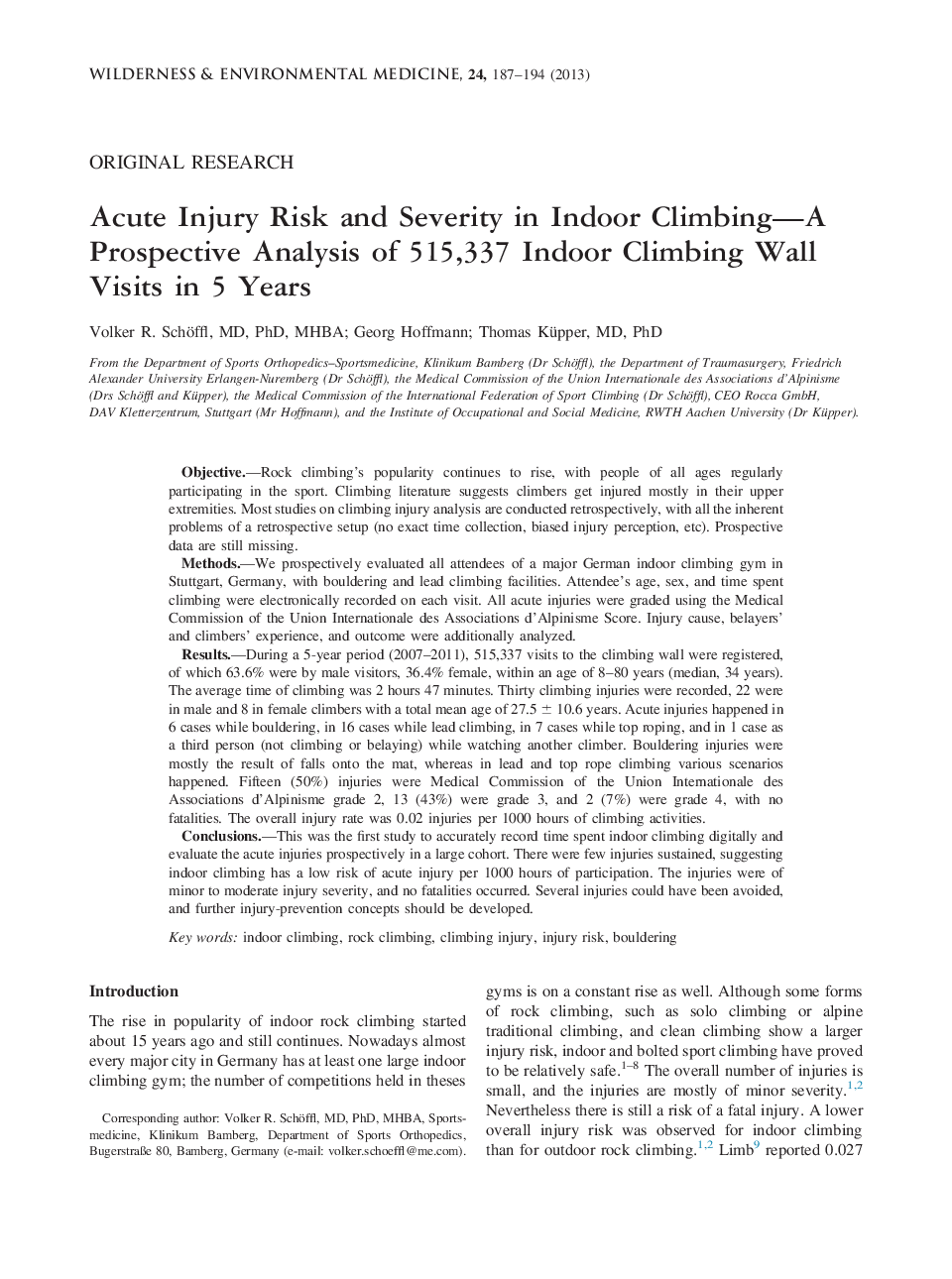| کد مقاله | کد نشریه | سال انتشار | مقاله انگلیسی | نسخه تمام متن |
|---|---|---|---|---|
| 2614809 | 1135048 | 2013 | 8 صفحه PDF | دانلود رایگان |

ObjectiveRock climbing’s popularity continues to rise, with people of all ages regularly participating in the sport. Climbing literature suggests climbers get injured mostly in their upper extremities. Most studies on climbing injury analysis are conducted retrospectively, with all the inherent problems of a retrospective setup (no exact time collection, biased injury perception, etc). Prospective data are still missing.MethodsWe prospectively evaluated all attendees of a major German indoor climbing gym in Stuttgart, Germany, with bouldering and lead climbing facilities. Attendee’s age, sex, and time spent climbing were electronically recorded on each visit. All acute injuries were graded using the Medical Commission of the Union Internationale des Associations d’Alpinisme Score. Injury cause, belayers’ and climbers’ experience, and outcome were additionally analyzed.ResultsDuring a 5-year period (2007–2011), 515,337 visits to the climbing wall were registered, of which 63.6% were by male visitors, 36.4% female, within an age of 8–80 years (median, 34 years). The average time of climbing was 2 hours 47 minutes. Thirty climbing injuries were recorded, 22 were in male and 8 in female climbers with a total mean age of 27.5 ± 10.6 years. Acute injuries happened in 6 cases while bouldering, in 16 cases while lead climbing, in 7 cases while top roping, and in 1 case as a third person (not climbing or belaying) while watching another climber. Bouldering injuries were mostly the result of falls onto the mat, whereas in lead and top rope climbing various scenarios happened. Fifteen (50%) injuries were Medical Commission of the Union Internationale des Associations d’Alpinisme grade 2, 13 (43%) were grade 3, and 2 (7%) were grade 4, with no fatalities. The overall injury rate was 0.02 injuries per 1000 hours of climbing activities.ConclusionsThis was the first study to accurately record time spent indoor climbing digitally and evaluate the acute injuries prospectively in a large cohort. There were few injuries sustained, suggesting indoor climbing has a low risk of acute injury per 1000 hours of participation. The injuries were of minor to moderate injury severity, and no fatalities occurred. Several injuries could have been avoided, and further injury-prevention concepts should be developed.
Journal: Wilderness & Environmental Medicine - Volume 24, Issue 3, September 2013, Pages 187–194